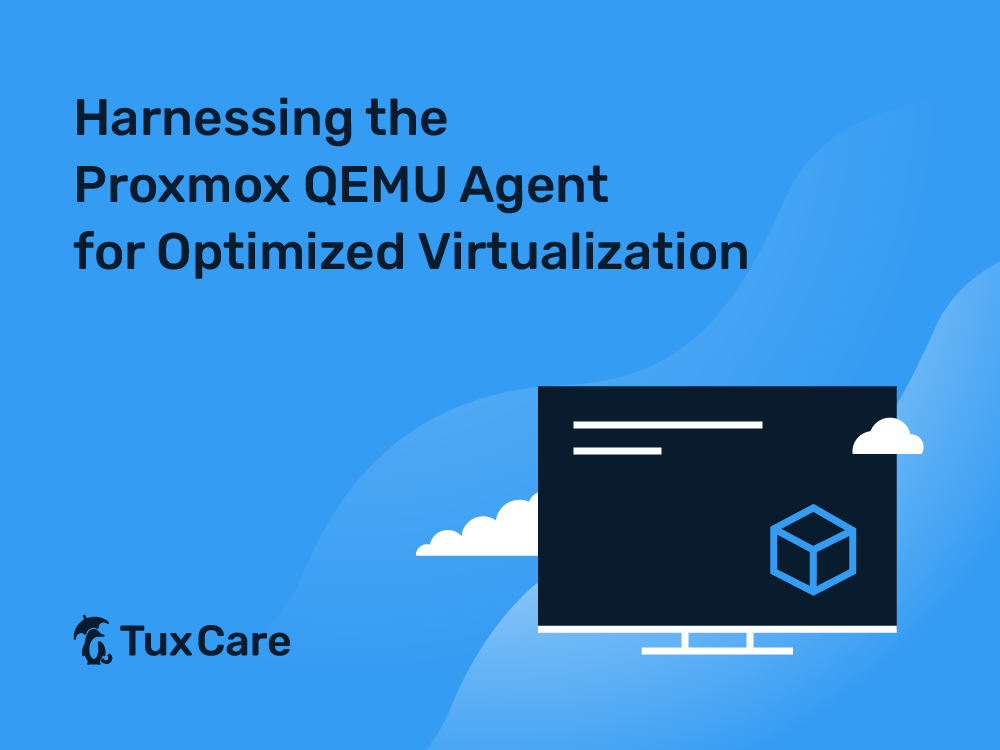Harnessing the Proxmox QEMU Agent for Optimized Virtualization
- Learn about the Proxmox QEMU agent for exchanging information between the host and VMs
- Discover how to execute QEMU guest agent commands in the guest system
- Explore QEMUCare as an automated vulnerability patching solution for QEMU hypervisors
Virtualization has emerged as the game-changer in modern IT infrastructure, offering flexibility, scalability, and resource optimization. In this context, Proxmox Virtual Environment (Proxmox VE) stands out as a robust, open-source virtualization platform that combines two virtualization technologies: KVM (Kernel-based Virtual Machine) for virtual machines (VMs) and LXC (Linux Containers) for lightweight container-based virtualization.
In this blog post, we delve into the role of the Proxmox QEMU agent in enhancing the functionality, management, and communication between the host and guest systems within a Proxmox environment.
What is the Proxmox QEMU Agent?
Proxmox QEMU agent, also known as qemu-guest-agent, is a tool installed in the guest system that establishes communication between the Proxmox VE host and virtual machines. It also helps improve monitoring, enhance performance, and execute commands on the guest system.
The Role of the QEMU Guest Agent in Virtualization
The key roles and benefits of the QEMU guest agent include:
Guest System Information
The QEMU agent helps get details of the guest system, including IP address, resource usage, and other critical insights. Such information is valuable for monitoring and managing virtual machines.
Guest System Control
The Proxmox QEMU agent allows the user to execute various commands within the guest system, such as shutting down, restarting, or pausing the VM. This level of control streamlines the management of virtualized environments.
Snapshot Support
The QEMU agent is used to freeze the guest file system during backup or snapshot creation. When the guest agent is active, it invokes guest-fsfreeze-freeze and guest-fsfreeze-thaw to improve consistency. And, when the guest (VM) is resumed, such as after a snapshot, it promptly synchronizes its time with the hypervisor using qemu-guest-agent.
Setting Up Proxmox QEMU Agent in Linux
- First, you need to install the QEMU guest agent in the virtual machine (VM). You can install the qemu-guest-agent package on Linux using the system’s default tool.
For Debian or Ubuntu, you can use:
# apt install qemu-guest-agent
For RHEL-based systems, you can run:
# dnf install qemu-guest-agent
- After the installation has finished, start the guest service.
# systemctl start qemu-guest-agent
- And enable it to start automatically during the boot.
# systemctl enable qemu-guest-agent
- To configure QEMU Agent in VM Settings, you have to access the Proxmox VE web interface (GUI). Then, navigate to the desired VM’s hardware tab and add a new “Qemu Agent” device to the VM.
With these steps completed, the agent will be successfully installed and activated on the VM.
Using the Proxmox QEMU Agent
With the QEMU guest agent successfully set up, administrators can leverage its capabilities for seamless virtual machine management.
Monitoring Guest System
In the Proxmox web interface, under the “Monitor” tab of the respective VM, you can view real-time metrics such as CPU usage, memory usage, and network activity.
Executing Commands
Perform various actions on the guest system through the Proxmox web interface or command line. For example:
Test the communication with the guest agent:
# qm agent <vmid> ping
Shutdown VM:
# qm agent <vmid> shutdown
Display the OS information of the VM:
# qm agent <vmid> get-osinfo
Final Thoughts
The Proxmox QEMU agent plays a crucial role in enhancing the virtualization experience within the Proxmox VE environment. Its ability to facilitate communication, provide detailed insights, and enable efficient management of guest systems makes it an indispensable tool for administrators.
Additionally, it is essential to understand the evolving threat landscape of virtualization management. In the dynamic realm of modern IT environments, staying ahead of potential vulnerabilities is paramount. For a secure virtualization experience, you can utilize TuxCare’s QEMUCare to patch virtualization systems automatically without any downtime or virtualization layer migration.
With the QEMUCare live patching solution, you can elevate the security posture of your virtualized infrastructure and meet the proactive and responsive demands of the modern digital landscape.
Speak to a TuxCare expert to secure your QEMU-based virtualization systems with QEMUCare.



 Documentation
Documentation Login
Login




